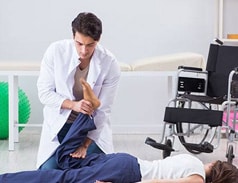This blog will help you understand why tendon pain (Achilles, patellar, or plantar fascia) can show up after your ultra — even if you were feeling fine on race day. We’ll explain what’s going on, and how physiotherapy can help you recover faster, run better, and prevent this from becoming a chronic issue.
But first – a bit about the Margaret River Ultra.
The Margaret River Ultra Marathon provides an incredible journey through the forests, trails, beaches and bluffs on the beautiful Cape to Cape coastline in South West WA. This year, it was held on Saturday the 10th of May – Sunday the 11th of May 2025.
“Starting at Hamelin Bay in the south and finishing at the Howard Park at Wilyabrup in the north, the 80km point-to-point course takes runners through huge Karri tree forests, along cliff top trails providing endless coastal views, over huge granite domes and rock slabs, along crisp white sandy beaches and through some of the vineyards that make the region so popular for visitors.”
So what happens after the race?
You smashed your race goals, crossed that finish line, and maybe even treated yourself to a post-run wine (it is Margaret River, after all). But now you’re limping out of bed, your heel is screaming after a walk, or your knee twinges on stairs.
What are tendons?
Tendons are the thick cords of tissue that anchor muscle to bone. They’re built to store and release energy — making them crucial in running. But when they’re overloaded (think: running 80+ km on sand, trail, and hills), they can become irritated or injured.
Common post-ultra tendon injuries include:
- Achilles tendinopathy – pain at the back of the heel, worse with walking or running uphill.
- Patellar tendinopathy – pain just below the kneecap, especially during squats or stairs.
- Plantar fasciopathy – sharp pain under the heel, often worse first thing in the morning.
These aren’t tears — they’re often due to overload, and they respond well to the right rehab plan.
Case Study
One runner we saw trained hard for a Margaret River Ultra. She hit every session, stayed injury-free, and ran a solid race. But two weeks later, she noticed heel pain when walking her dog. Then came the stiffness getting out of bed. Soon, a short jog left her limping.
She thought it would settle with rest, but weeks later it hadn’t. Once she saw us, we identified early signs of plantar fasciopathy — classic in runners post-event. We started her on a tailored loading program, addressed her biomechanics, and gradually reintroduced running. Within weeks, she was pain-free and back building for her next event — smarter and stronger.
Step 1: Load Management is Key
One of the biggest mistakes we see is runners either doing too much too soon, or complete rest. Tendons hate sudden change — either way. The right amount of graded load is essential for healing.
Step 2: Strength Beats Stretching
Most tendon injuries respond better to heavy, slow strength work rather than endless stretching or foam rolling. Think calf raises, single-leg squats, isometrics — all tailored to your tendon and stage of recovery.
Step 3: Treat the Whole Chain
Tendon injuries often come from somewhere else — stiff ankles, weak glutes, poor control. A physiotherapist can assess your movement patterns and help reduce your risk of recurrence.
Are you still dealing with tendon pain weeks after the Margaret River Ultra?
Don’t wait for it to “go away” on its own — chronic tendon issues are much harder to fix.
Book a physiotherapy session at Miami or Lakelands Physiotherapy to get your ankle, knee, or heel properly assessed.
Let’s get you back on the trails — stronger, smarter, and pain-free.


